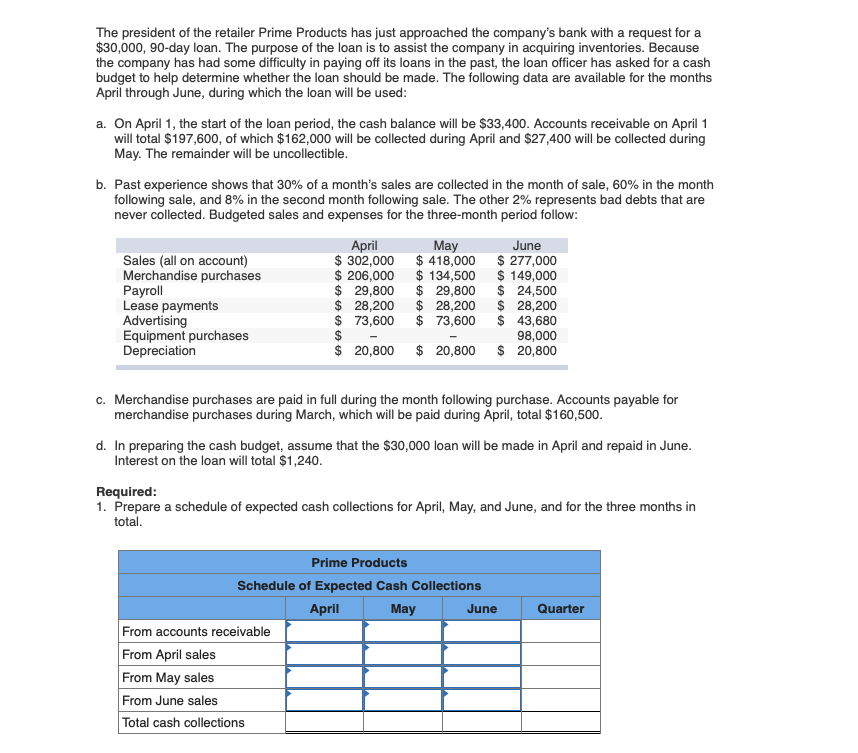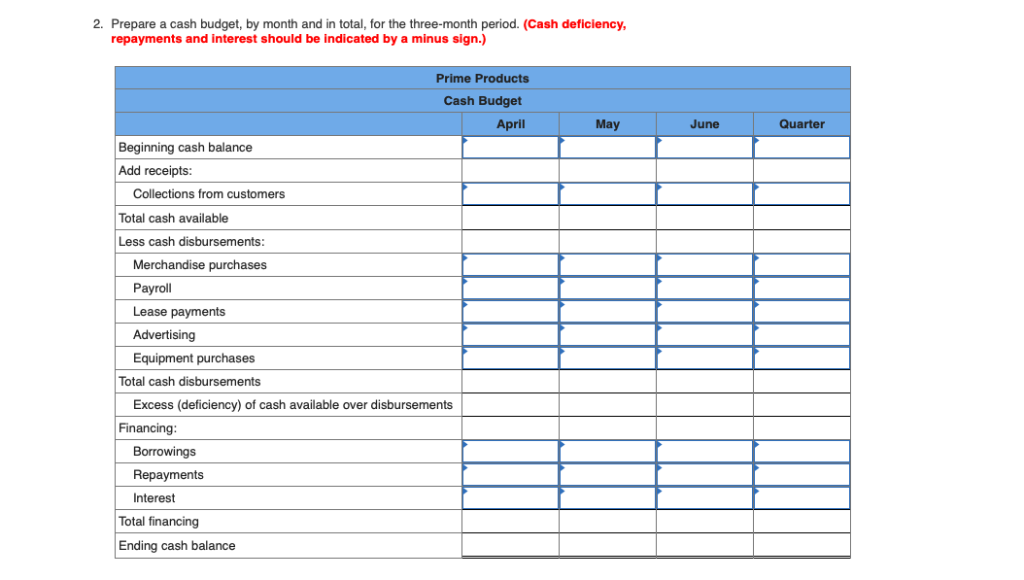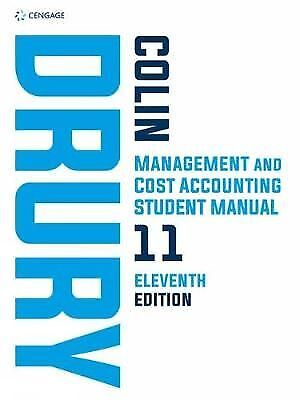Question
The president of the retailer Prime Products has just approached the companys bank with a request for a $30,000, 90-day loan. The purpose of the
The president of the retailer Prime Products has just approached the companys bank with a request for a $30,000, 90-day loan. The purpose of the loan is to assist the company in acquiring inventories. Because the company has had some difficulty in paying off its loans in the past, the loan officer has asked for a cash budget to help determine whether the loan should be made. The following data are available for the months April through June, during which the loan will be used: a. On April 1, the start of the loan period, the cash balance will be $33,400. Accounts receivable on April 1 will total $197,600, of which $162,000 will be collected during April and $27,400 will be collected during May. The remainder will be uncollectible. b. Past experience shows that 30% of a months sales are collected in the month of sale, 60% in the month following sale, and 8% in the second month following sale. The other 2% represents bad debts that are never collected. Budgeted sales and expenses for the three-month period follow: April May June Sales (all on account) $ 302,000 $ 418,000 $ 277,000 Merchandise purchases $ 206,000 $ 134,500 $ 149,000 Payroll $ 29,800 $ 29,800 $ 24,500 Lease payments $ 28,200 $ 28,200 $ 28,200 Advertising $ 73,600 $ 73,600 $ 43,680 Equipment purchases $ 98,000 Depreciation $ 20,800 $ 20,800 $ 20,800 c. Merchandise purchases are paid in full during the month following purchase. Accounts payable for merchandise purchases during March, which will be paid during April, total $160,500. d. In preparing the cash budget, assume that the $30,000 loan will be made in April and repaid in June. Interest on the loan will total $1,240.


Step by Step Solution
There are 3 Steps involved in it
Step: 1

Get Instant Access to Expert-Tailored Solutions
See step-by-step solutions with expert insights and AI powered tools for academic success
Step: 2

Step: 3

Ace Your Homework with AI
Get the answers you need in no time with our AI-driven, step-by-step assistance
Get Started


